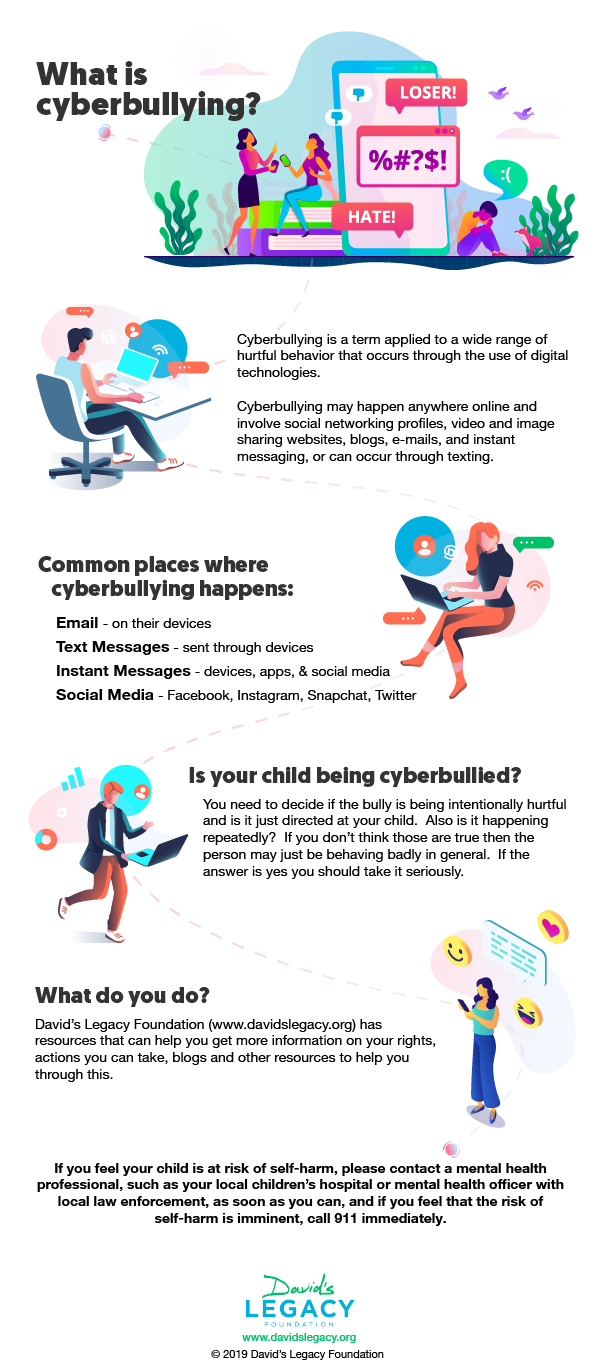The challenge with cyberbullying is that much of it happens in digital environments where no responsible adults are present. The cyberbully is usually someone the target knows, but it also can be a stranger. According to New York State’s Division of Criminal Justice Services, a few common types of cyberbullying include:
Denigration: Spreading harmful, untrue, or damaging rumors and statements online that will damage an individual’s reputation.
Exclusion: Excluding a person on purpose from an online group, considered an indirect form of cyberbullying.
Flaming: Fighting that involves sending angry, cruel, rude, and vulgar messages to one individual or several individuals in a private or public online setting.
Happy Slapping: Attacking an individual physically as a “prank” or “joke” while others film the attack or take pictures to be distributed or posted online.
Harassment: Sending an ongoing series of hurtful, insulting online messages targeted to an individual.
Impersonation: Pretending and posing as someone else, then sending or posting material online with the intent to damage an individual’s reputation.
Outing: Sending or posting material (such as message and images) online about a person that contains sensitive, private, or embarrassing information.
Text Wars/Attacks: Hounding a targeted individual with a high amount of mean text messages and emails.
Trickery: Engaging in deception to acquire embarrassing material that is then made public online.


